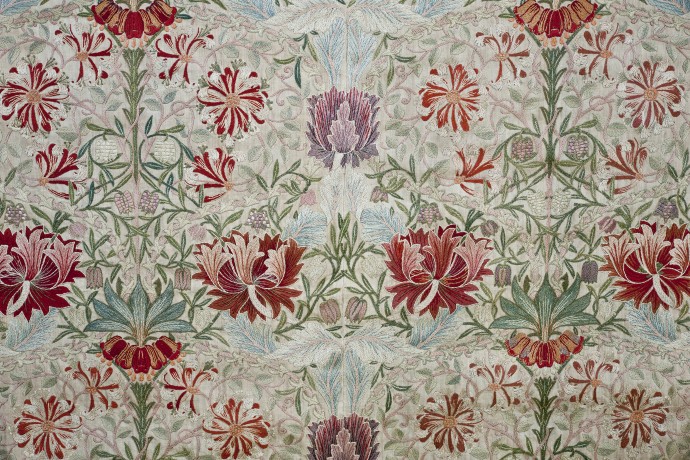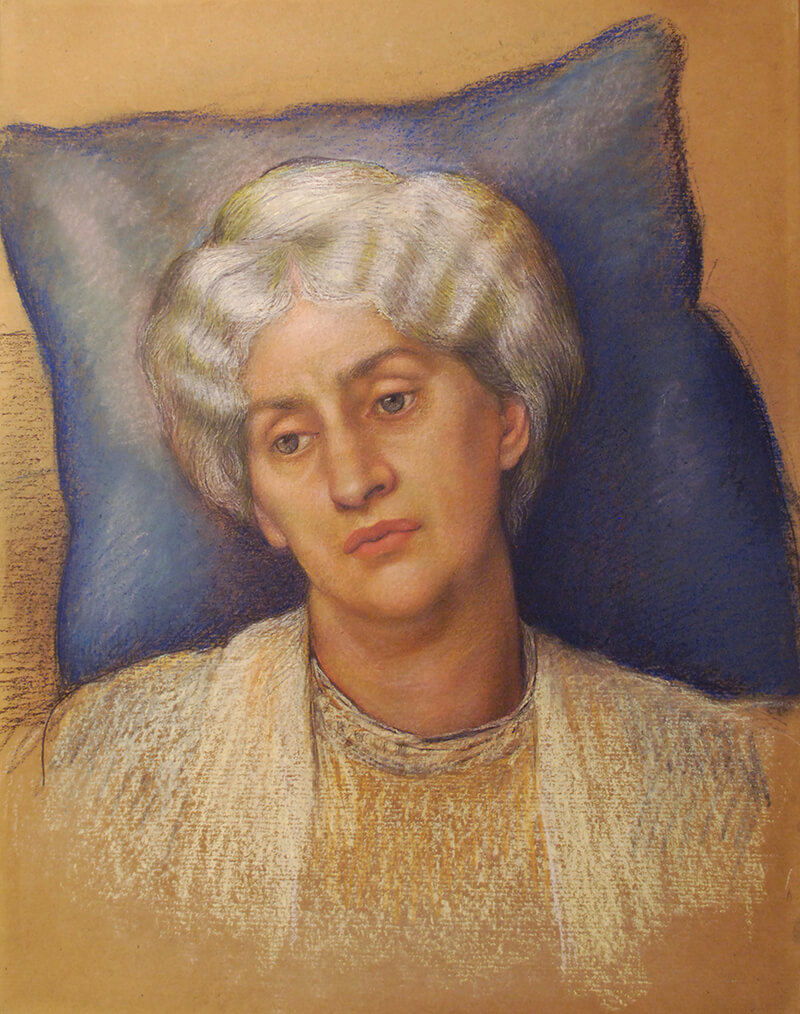
Study for The Hourglass/Portrait of Jane Morris by Evelyn De Morgan (1904-5)
Born into a poor family Jane Burden (1839-1914) had the opportunity to reinvent herself as a fine lady when she met and married William Morris. William and Jane met when she was modelling for Edward Burne-Jones and Dante Gabriel Rossetti in the 1860s. Her distinctive features and dark hair made her an unusual, but stunning model. Burne-Jones, Rossetti and De Morgan all sought her out to be their model. The Morrises married in 1859, commissioning the ‘Red House’ in Bexleyheath from the architect Philip Webb as their Medieval-style home. Later, they would take out a lease on Kelmscott Manor with Rossetti. Jane worked with William at his furnishing business, where Jane, an accomplished embroiderer recreated her husband’s designs.
Honeysuckle embroidery (designed 1876, made 1880s) by Jane Morris (C) William Morris Gallery
As a model Jane Morris has been associated to over 30 portraits, her striking features are recognisable in many of Rosetti’s obsessive paintings of her, sparking rumours that she continued to have an affair with him for over 20 years. Jane was chosen by Evelyn De Morgan as a model for her painting The Hourglass. There are many studies and compositional sketches in the De Morgan collection of Jane Morris, some were in preparation for The Hourglass painting, as well as a study of Jane in old age, not just a preparation study for The Hourglass but also as a testament to the loving friendship between the two women.
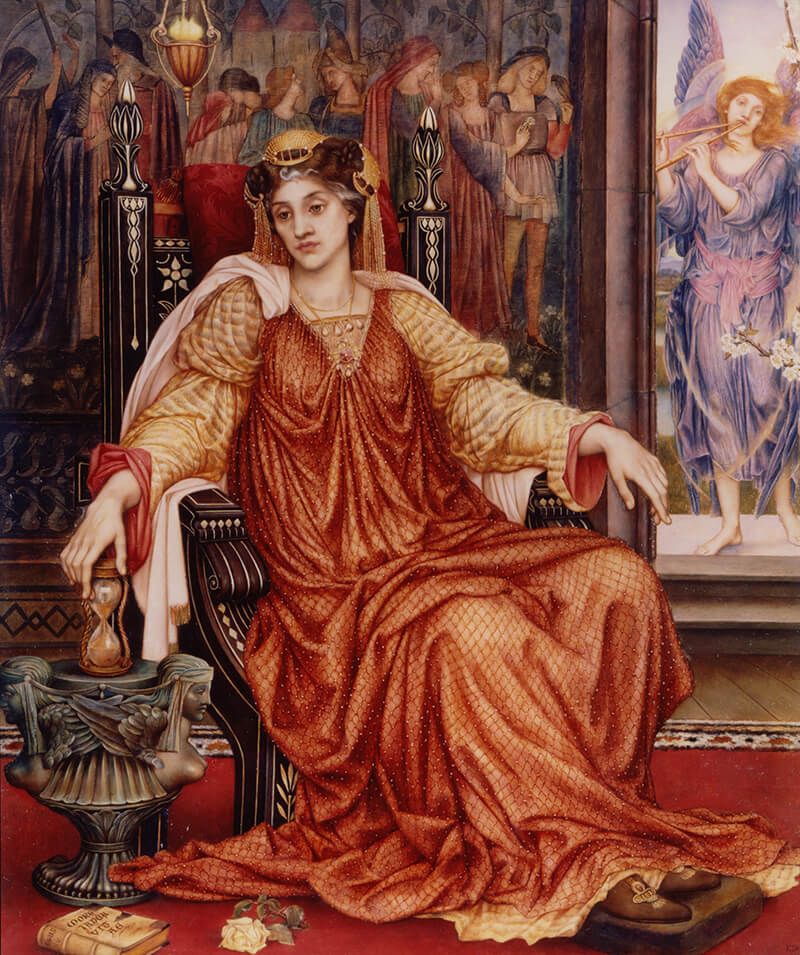
The Hourglass by Evelyn De Morgan (1904-5)
Evelyn De Morgan travelled to draw Jane at Kelmscott Manor, in Gloucester. She sketched the house whilst she was there, clearly impressed with its charm and beauty. The drawing survives today in the collection of Wightwick Manor, National Trust.
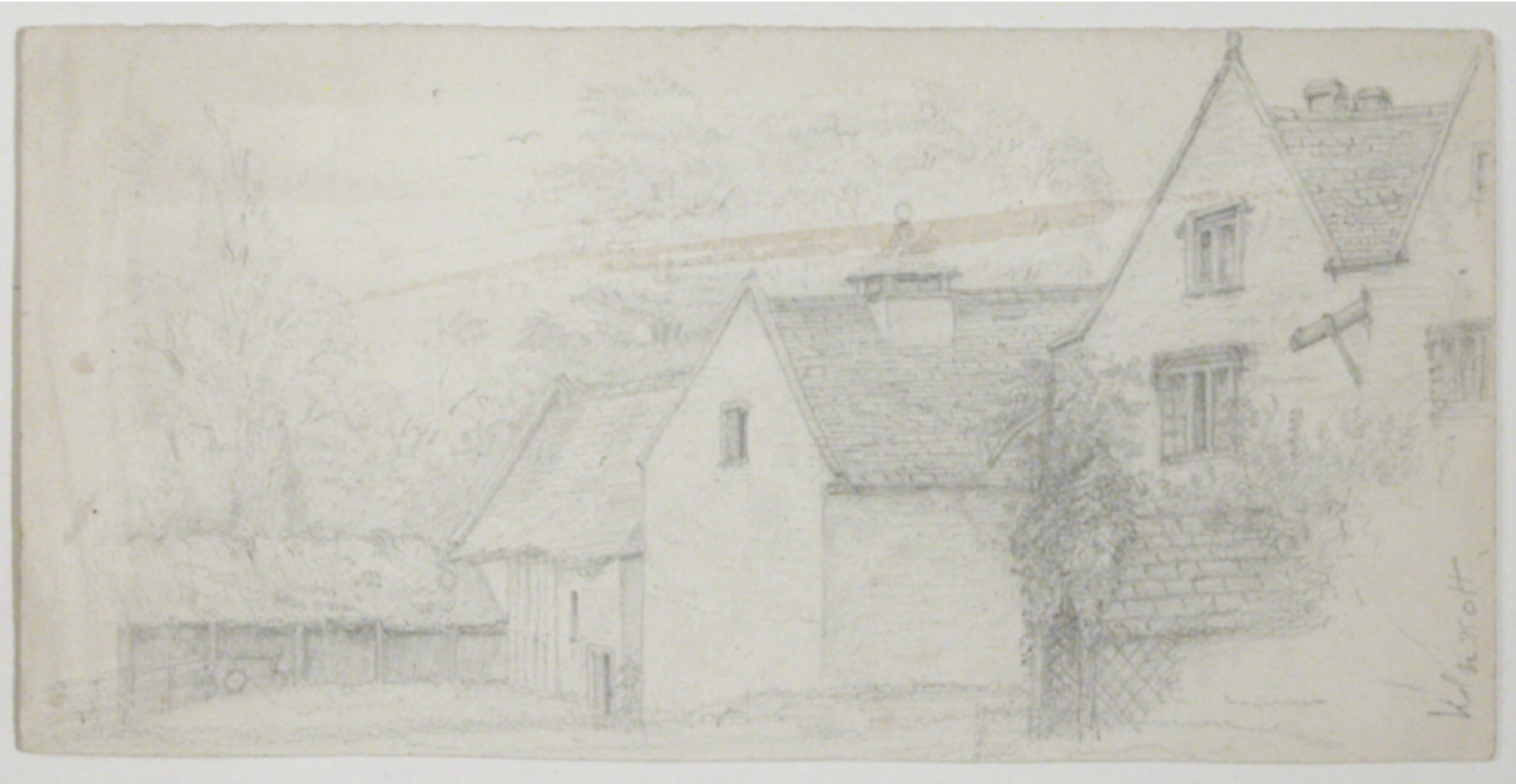
Kelmscott Manor by Evelyn De Morgan (C) Wightwick Manor, National Trust http://www.nationaltrustcollections.org.uk/object/1288081
The sumptuous colours in The Hourglass and portrayal of Jane Morris in medieval clothing gives me a glimpse of how she appeared in life. From her humble beginnings she rose to become comfortable in the company of the social elite. She appears to me as someone that was elegant, charming knowledgeable, yet down to earth, with all the fears and insecurities that any of us have about aging. Evelyn De Morgan was an exceptional draughtswoman, her depiction of the human form and ability to recreate the drapery of cloth is so realistic, you can almost feel the weight of the gown as it billows to the floor.
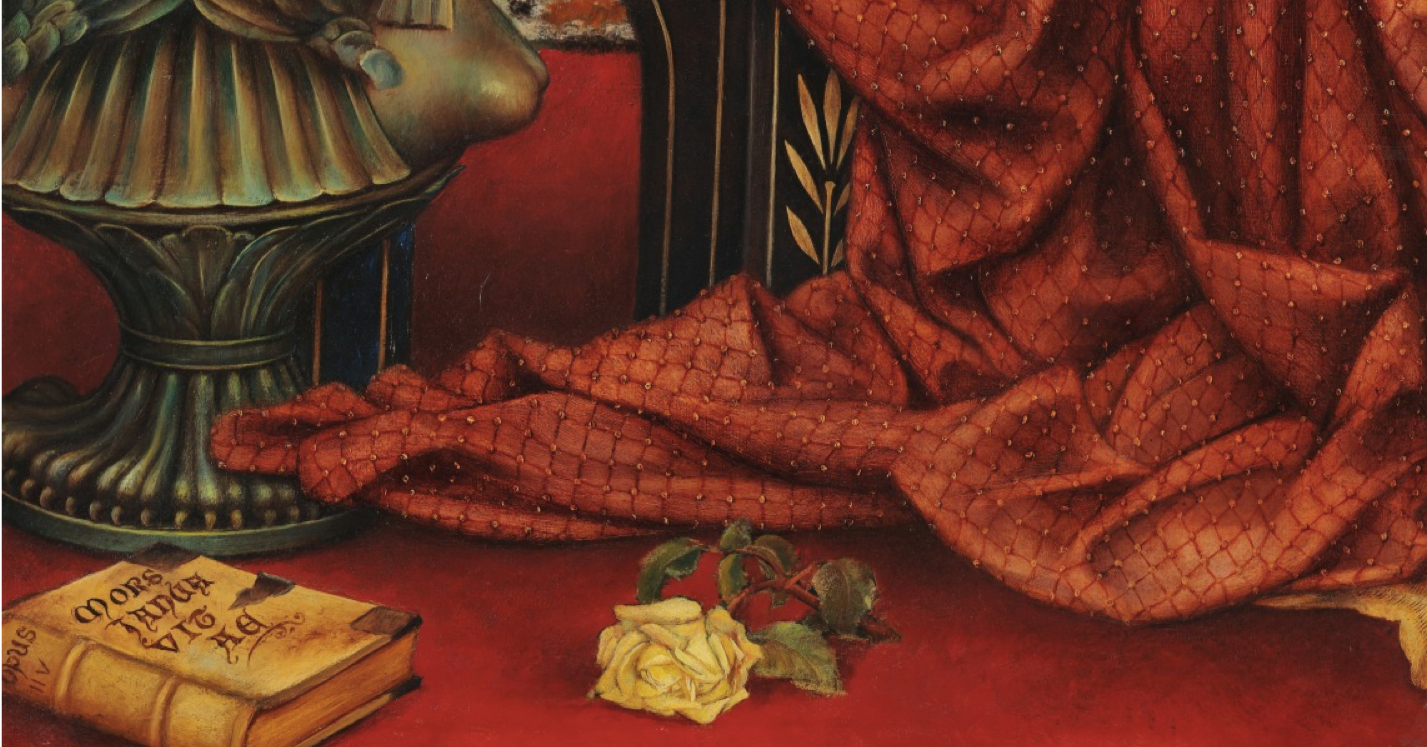
Detatil of The Hourglass
As a person that was concerned with people’s spiritualism, Evelyn’s compositions always contained much symbolism. The Hourglass is no exception. Her sister Wilhelmina Stirling wrote about the setting of this oil painting noting the detailed tapestry in the background, the sitter pondering the passing of time and this was because of the presence of the hourglass quickly running out of sand, the presence of a dying rose at her feet and the title of the book ‘Mos Janua Vitae’, ‘Death is the portal of life’ and her clothing is also a symbol by making the choice of rich russets and gold which are the colours of autumn. In the doorway you can see the immortal figure of life who is piping joyfully at the sun in azure robes surrounded by spring flowers, perhaps the figure is also pondering her youth?
Wilhelmina Stirling also compared The Hourglass to “echo of a movement in the Waldstein Sonata by Beethoven” (1905), possibly because of all of Beethoven’s sonata’s the Waldstein was so complex and technical that it was way beyond the ability of any amateur pianist, a comment perhaps that her sisters painting ability was beyond compare?
In 1906 Jane Morris wrote informally to William De Morgan, starting the letter with “Dear Bill”, and goes on to tell him how much she enjoyed his novel. In the letter Jane Morris comments that she does not think she has written to him before, but because she had enjoyed his book so much it was a “such very grand occasion”, Jane goes on to complain that she cannot write half of what is in her mind because “Letter writing being a lost art with me now”. This struck a chord with me, because so many people would say that phrase in 2020 preferring electronic means of communication to letter writing.
Its quite possible that Jane was the subject of a novel herself, the author of ‘Miss Brown’, Violet Paget, better known as Vernon Lee, wrote the novel ‘Miss Brown’ which inspired Eliza Doolittle in My Fair Lady. Violet had met Jane and I am sure she would have known about Jane’s background, she would have been enchanted by Jane’s lack of Victorian stifling properness and conformity, making the choice to wear medieval clothing with a huge number of beads rather than wearing the corsets and crinolines of the time.
Jane Morris, in my opinion, was clearly an intelligent, talented, enigmatic person with opinions of her own. She was not restricted by the conventions of society, did what she pleased, wore what she wanted to, a woman of her own time. Someone I would very much like to have to dinner with, so that I could listen to all of her stories, while I sketch and paint her. I feel her ‘look’ is so striking, she is timeless.
By Vanessa Cumper, De Morgan Volunteer


